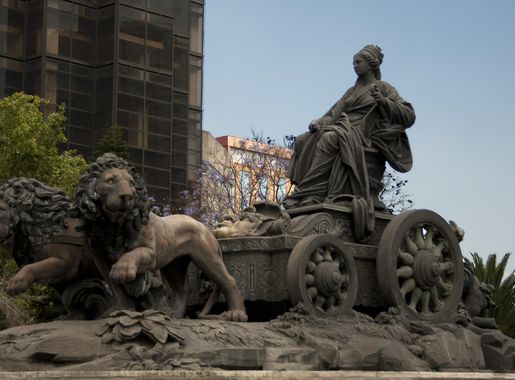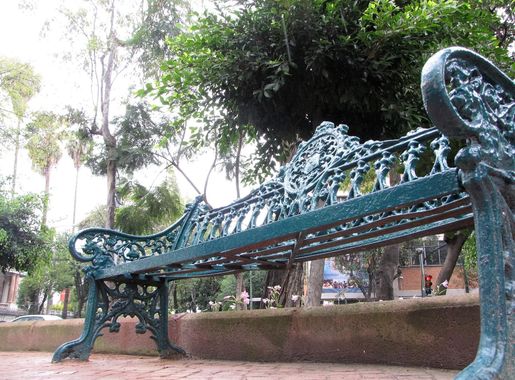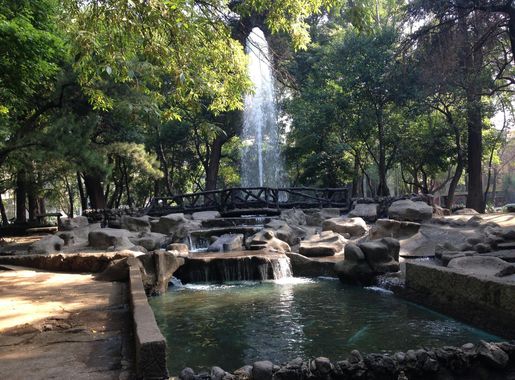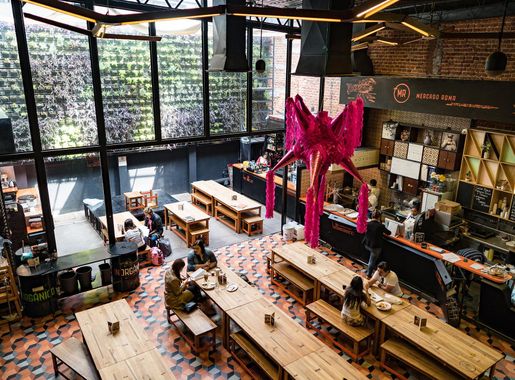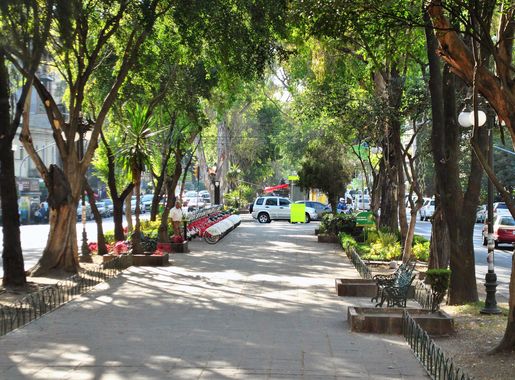
Exploring the Bohemian Charm of Roma in Mexico City
Discover the bohemian charm and vibrant culture of Roma in Mexico City – a perfect blend of historic elegance and modern allure.
Nestled in the heart of Mexico City, Roma is a vibrant and eclectic neighbourhood that offers a fascinating blend of historic charm and contemporary flair. Known for its tree-lined streets, stunning architecture, and artistic spirit, Roma is a must-visit destination for any traveler seeking to experience the true essence of the city. Roma is divided into two main areas: Roma Norte and Roma Sur. Each offers its own unique attractions and atmosphere. Roma Norte is renowned for its lively nightlife, trendy cafes, and boutique shops. Here, you can stroll along its picturesque avenues, visit art galleries, and enjoy exquisite dining experiences at some of the city's best restaurants. Roma Sur, on the other hand, exudes a more tranquil vibe, with beautiful parks, quiet residential streets, and charming local markets. The neighbourhood is also famous for its cultural heritage. You can explore the iconic Plaza Rio de Janeiro, where you'll find the replica of Michelangelo’s David, or visit the Casa Lamm Cultural Center for a dose of local art and history. The area is also home to numerous historic buildings, many of which date back to the early 20th century, showcasing a mix of Art Deco and Neoclassical styles. Food lovers will be in heaven in Roma, as the neighbourhood is a gastronomic paradise. From traditional Mexican street food to international cuisines, there is something to satisfy every palate. Be sure to visit the Mercado Roma, a trendy food market offering a variety of gourmet delights and artisanal products.
Local tips in Roma
- Visit on a Sunday to experience the lively Tianguis Cultural del Chopo, a local market offering unique crafts and goods.
- Take a leisurely walk through Parque México in nearby Condesa for a relaxing escape from the bustling city.
- Explore the neighbourhood on foot or by bike to fully appreciate its architectural beauty and hidden gems.
- Don't miss the chance to try churros and hot chocolate at El Moro, a local favorite.
- Plan to visit during the day and at night to experience Roma's dynamic atmosphere that changes with the hours.
Exploring the Bohemian Charm of Roma in Mexico City
Nestled in the heart of Mexico City, Roma is a vibrant and eclectic neighbourhood that offers a fascinating blend of historic charm and contemporary flair. Known for its tree-lined streets, stunning architecture, and artistic spirit, Roma is a must-visit destination for any traveler seeking to experience the true essence of the city. Roma is divided into two main areas: Roma Norte and Roma Sur. Each offers its own unique attractions and atmosphere. Roma Norte is renowned for its lively nightlife, trendy cafes, and boutique shops. Here, you can stroll along its picturesque avenues, visit art galleries, and enjoy exquisite dining experiences at some of the city's best restaurants. Roma Sur, on the other hand, exudes a more tranquil vibe, with beautiful parks, quiet residential streets, and charming local markets. The neighbourhood is also famous for its cultural heritage. You can explore the iconic Plaza Rio de Janeiro, where you'll find the replica of Michelangelo’s David, or visit the Casa Lamm Cultural Center for a dose of local art and history. The area is also home to numerous historic buildings, many of which date back to the early 20th century, showcasing a mix of Art Deco and Neoclassical styles. Food lovers will be in heaven in Roma, as the neighbourhood is a gastronomic paradise. From traditional Mexican street food to international cuisines, there is something to satisfy every palate. Be sure to visit the Mercado Roma, a trendy food market offering a variety of gourmet delights and artisanal products.
Iconic landmarks you can’t miss
Plaza de la Constitución
Experience the vibrant culture and history at Plaza de la Constitución, the iconic heart of Mexico City, surrounded by stunning architecture and lively events.
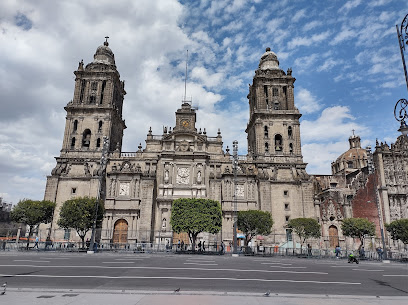
Monument to the Revolution
Explore the Monument to the Revolution, a stunning tribute to Mexico's rich history and revolutionary spirit in the heart of Mexico City.

Templo Mayor Museum
Explore the ancient wonders of the Templo Mayor Museum in Mexico City, a top archaeological site and tourist attraction revealing the rich heritage of the Aztec Empire.
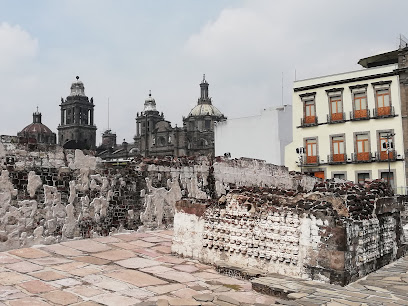
Fuente de Cibeles
Discover the stunning Fuente de Cibeles, an iconic fountain and historical landmark in the vibrant Roma Norte, Mexico City, rich in culture and beauty.

Monumento a la Madre
Explore the Monumento a la Madre, an iconic tribute to motherhood in Mexico City, surrounded by serene gardens and rich cultural significance.
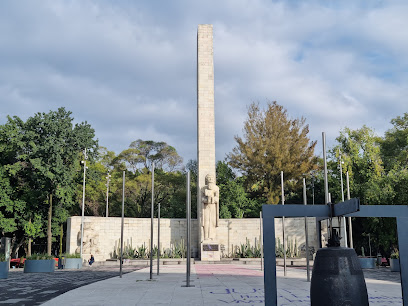
Ramón López Velarde Garden
Discover the natural beauty of Ramón López Velarde Garden, a tranquil escape in the vibrant Roma neighborhood of Mexico City.
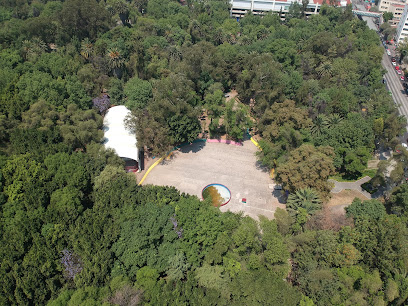
Plaza Luis Cabrera
Discover tranquility at Plaza Luis Cabrera, a charming park in Roma Norte, perfect for relaxation and cultural exploration in Mexico City.
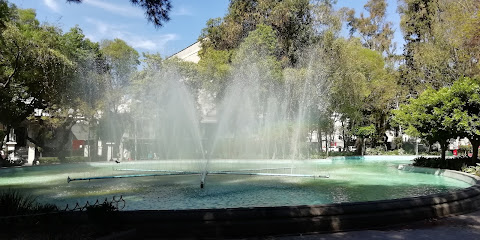
Plaza Río de Janeiro
Explore the lush gardens and vibrant atmosphere of Plaza Río de Janeiro, a serene urban park in the heart of Mexico City.

MODO Museo del Objeto del Objeto
Explore MODO Museo del Objeto del Objeto, a unique museum in Mexico City showcasing the art and history of everyday objects in an interactive setting.
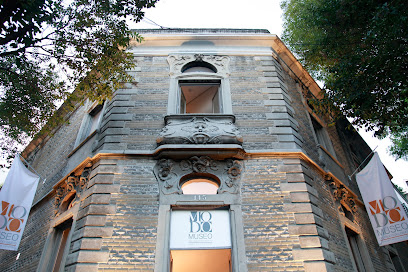
Monument to Cuauhtémoc
Explore the Monument to Cuauhtémoc, a striking tribute to Mexico's last Aztec emperor, in the vibrant heart of Mexico City.
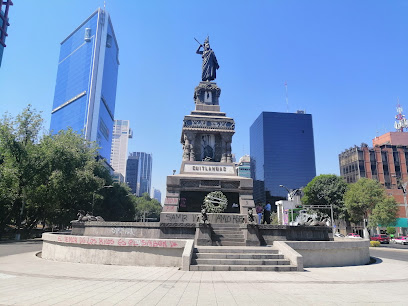
Casa “Roma” Alfonso Cuarón
Discover Casa 'Roma' Alfonso Cuarón, a cinematic landmark in Mexico City that brings the Oscar-winning film 'Roma' to life with its rich cultural significance.

Monumento al Honorable Pueblo de México
Discover the Monumento al Honorable Pueblo de México, a symbol of resilience and unity in the heart of vibrant Mexico City.
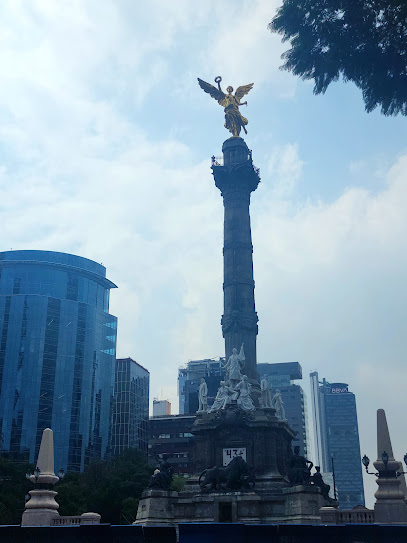
Mural en fachada
Discover the vibrant street art of Mural en Fachada in Roma Norte, a testament to Mexico City's rich artistic culture.

Fuente Sátiro y Amor
Discover the artistic allure of Fuente Sátiro y Amor, a captivating fountain in Roma Norte, Mexico City, where history and beauty converge.
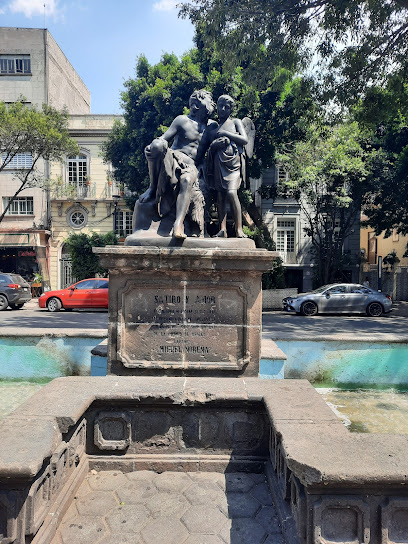
Arbol De Discos
Discover the heartbeat of Mexico City's music scene at Arbol De Discos, where vinyl treasures and live performances await every music lover.
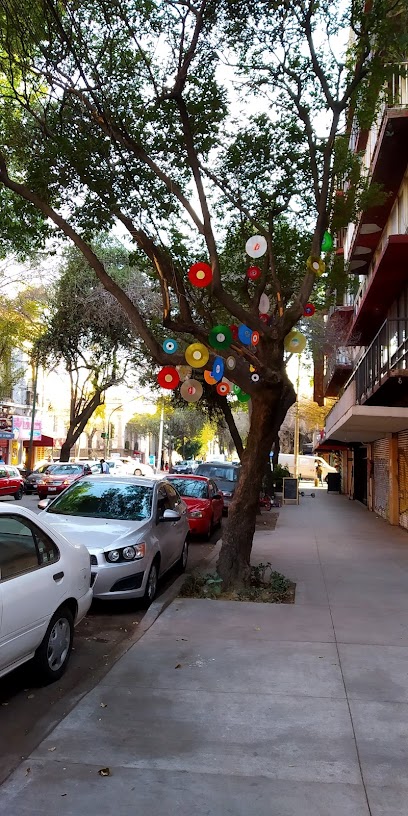
Unmissable attractions to see
Bosque de Chapultepec
Discover the lush landscapes and rich cultural heritage of Bosque de Chapultepec, Mexico City's iconic park and a must-visit for every traveler.

Museo Nacional de Antropología
Explore the vibrant history and culture of Mexico at the Museo Nacional de Antropología, a treasure trove of artifacts and stories.
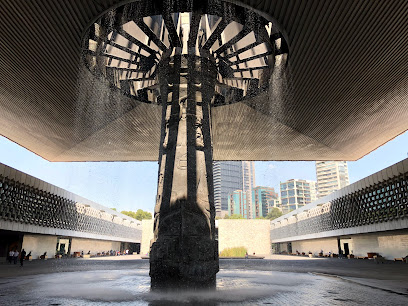
Templo Mayor Museum
Experience the wonders of the Aztec Empire at the Templo Mayor Museum, a cultural gem in the heart of Mexico City, rich in history and artifacts.
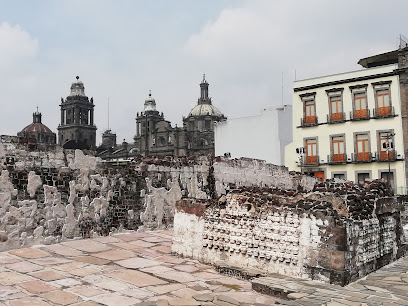
MODO Museo del Objeto del Objeto
Explore the fascinating world of everyday objects at MODO Museo del Objeto del Objeto in Mexico City – where art meets storytelling.
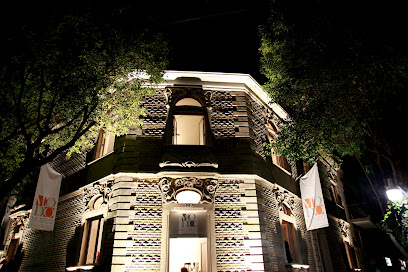
Mural en fachada
Discover the vibrant Mural en Fachada in Roma Norte, a masterpiece of street art that captures the essence of Mexico City's creative spirit.
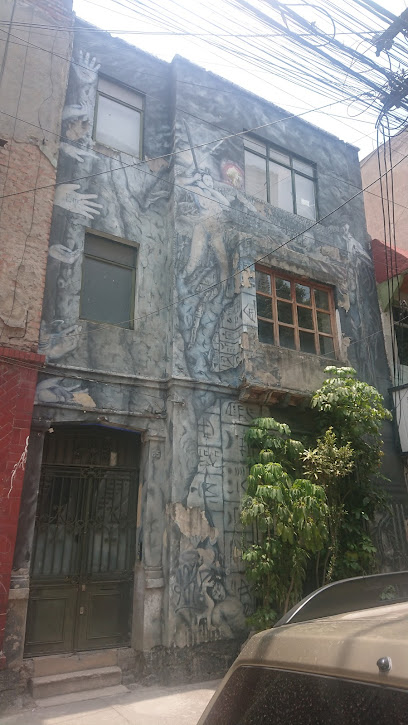
Arbol De Discos
Discover the vibrant musical heritage at Arbol De Discos, a must-visit destination for vinyl lovers in the heart of Mexico City.
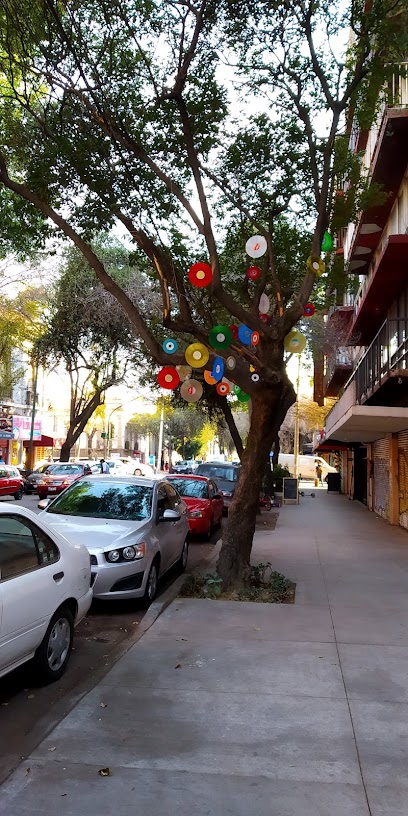
Essential places to dine
Contramar
Experience culinary excellence at Contramar - where fresh seafood meets vibrant Mexican culture in Roma Norte.

Mog Bistro
Discover exquisite Japanese and Taiwanese flavors at Mog Bistro in Roma Norte, Mexico City—where culinary artistry meets vibrant ambiance.
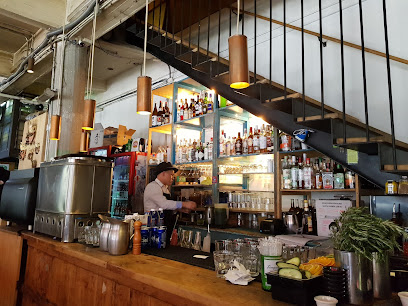
Meroma
Experience innovative fine dining at Meroma in Roma Norte, where culinary creativity meets local flavors in Mexico City.
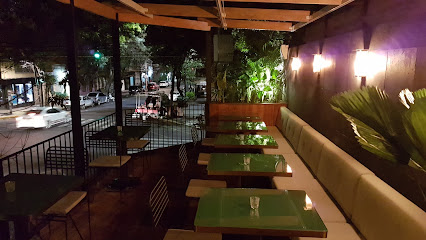
Galanga
Discover authentic Thai cuisine at Galanga in Roma Norte - where every dish is crafted with passion and flavor.
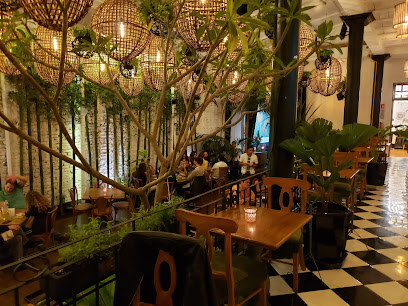
Huset
Experience authentic Mexican breakfast at Huset in Roma Norte – where flavor meets culture in an inviting atmosphere.
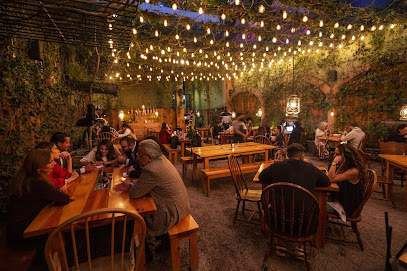
Blanco Colima
Experience unparalleled fine dining at Blanco Colima in Roma Norte, where traditional Mexican flavors meet contemporary elegance.

El Parnita
Experience the vibrant flavors of authentic Mexican cuisine at El Parnita in Roma Norte, Mexico City.
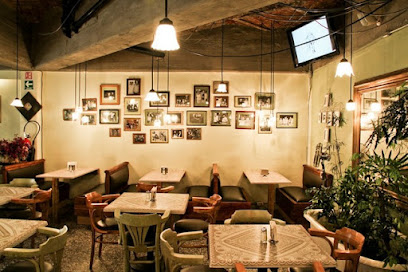
Casa Virginia
Experience exquisite fusion cuisine at Casa Virginia in Mexico City's vibrant Roma Norte - where Mexican flavors meet French elegance.
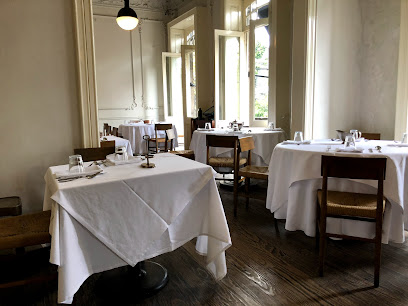
Nudo Negro
Discover innovative Mexican cuisine at Nudo Negro in Roma Norte – where each dish tells a story through vibrant flavors and artistic presentation.
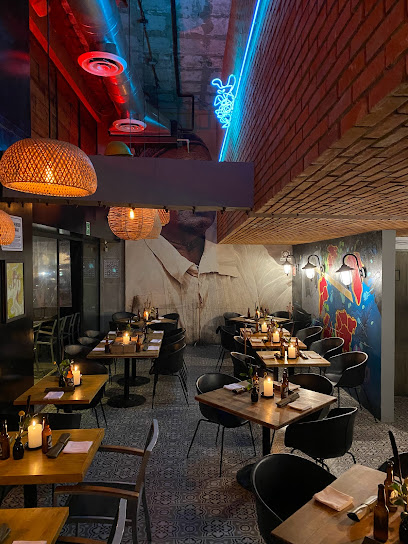
Pargot Restaurante
Experience authentic Mexican flavors at Pargot Restaurante in Roma Norte - where tradition meets innovation in every bite.
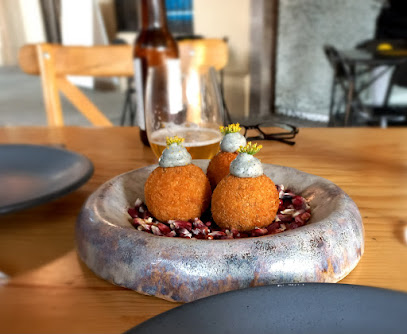
Markets, malls and hidden boutiques
Goodbye Folk Vintage Boutique
Explore the charm of vintage fashion at Goodbye Folk Vintage Boutique in Roma Norte, Mexico City, where unique treasures await every fashion lover.
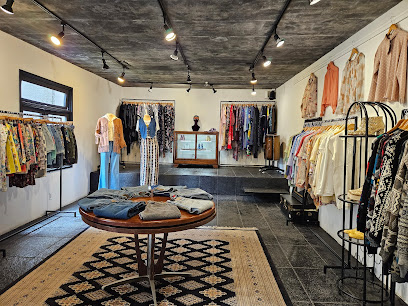
Goodbye Folk Vintage Clothing
Explore Goodbye Folk Vintage Clothing in Roma Norte for unique vintage finds that reflect the vibrant culture of Mexico City.

180º Shop
Explore unique fashion and accessories at 180º Shop, a trendy boutique in the heart of Roma Norte, Mexico City, showcasing local craftsmanship.
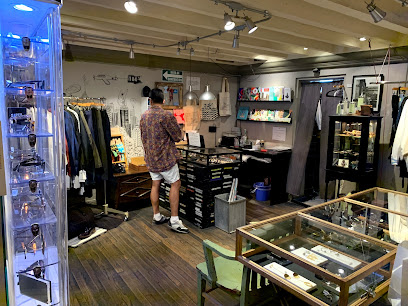
goodbye folk vintage tshirt gallery and more
Discover unique vintage fashion at Goodbye Folk Gallery, where nostalgia meets style in the heart of Mexico City's Roma Norte.
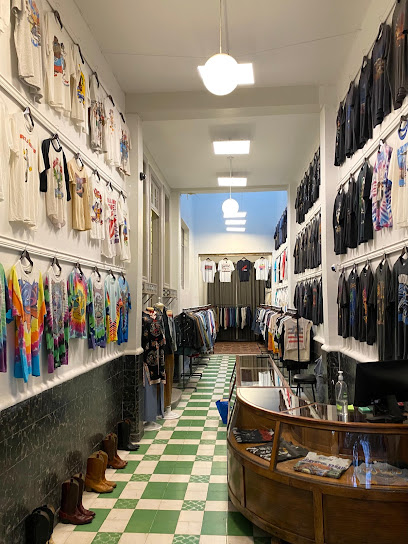
Pingüino México (Roma)
Explore Pingüino México in Roma for unique handicrafts and authentic Mexican art that capture the essence of Mexico's rich cultural heritage.
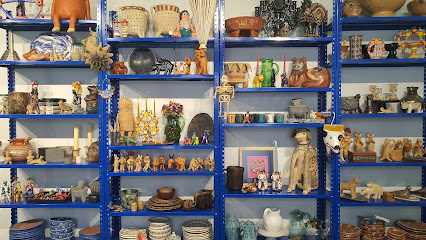
Boutique fashion Underground
Explore the eclectic world of fashion at Boutique Fashion Underground in Roma Norte, where unique styles meet local artistry.

El bazar más cool de todos
Discover unique fashion and local artistry at El Bazar Más Cool de Todos in Roma Sur, Mexico City - a vibrant shopping experience awaits!
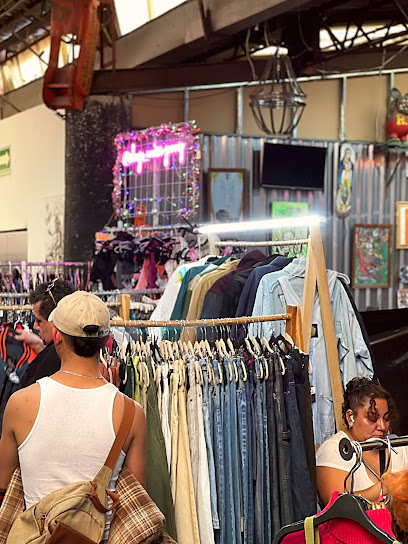
Vicolo Roma
Discover the charm of Vicolo Roma in Mexico City's Roma Norte, where unique gifts, fashion, and local craftsmanship await your exploration.
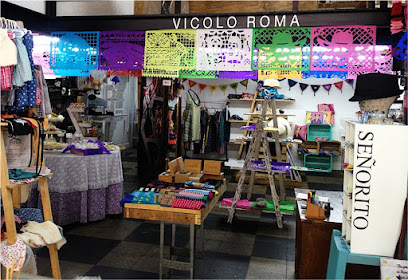
Amnes!a
Discover unique vintage fashion at Amnes!a, a vintage clothing store in the heart of Roma Norte, Mexico City, offering treasures from the past.
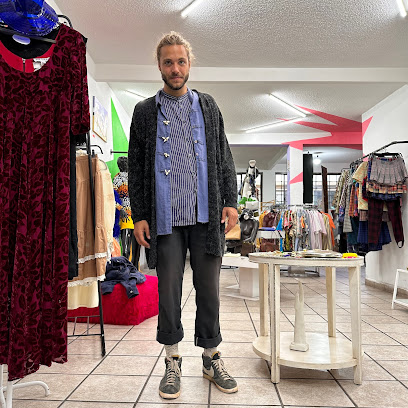
HAPPENING Roma Norte
Explore the unique fashion finds at HAPPENING Roma Norte, where local design meets contemporary style in the heart of Mexico City.
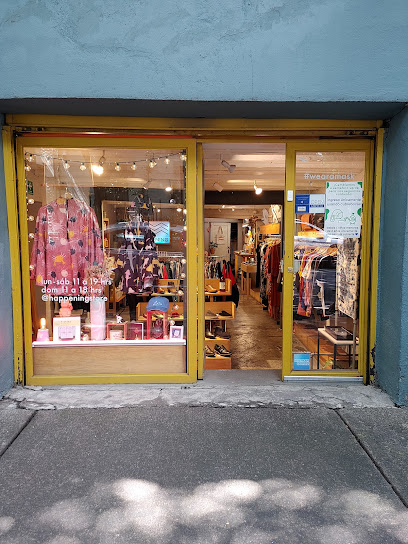
Essential bars & hidden hideouts
Falling Piano Brewing Co.
Discover Falling Piano Brewing Co. in Roma Norte for an unforgettable craft beer experience in the heart of Mexico City.
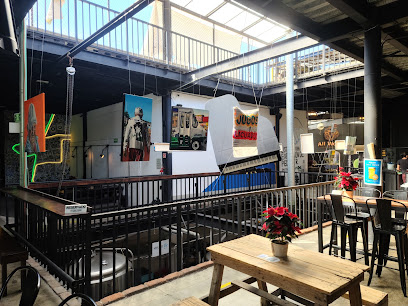
Licorería Limantour
Experience the art of mixology at Licorería Limantour, where innovative cocktails meet the vibrant spirit of Mexico City.
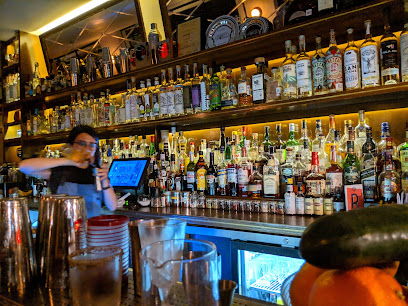
GinGin
Discover GinGin, the ultimate cocktail bar in Roma Norte, Mexico City, where mixology meets vibrant nightlife in an unforgettable setting.
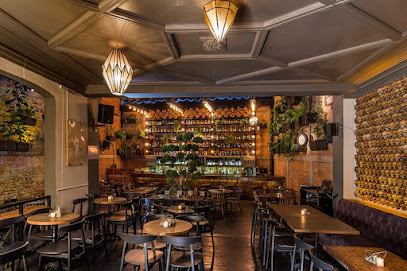
Balmori Roofbar
Experience the best of Mexico City at Balmori Roofbar, where grilled flavors and spectacular views come together for an unforgettable dining experience.

Ladina Bar
Discover the lively atmosphere and innovative cocktails at Ladina Bar in Roma Norte, Mexico City - a nightlife gem for every traveler.

Café de Nadie
Discover the vibrant atmosphere and unique cocktails at Café de Nadie, a must-visit bar in the heart of Roma Norte, Mexico City.
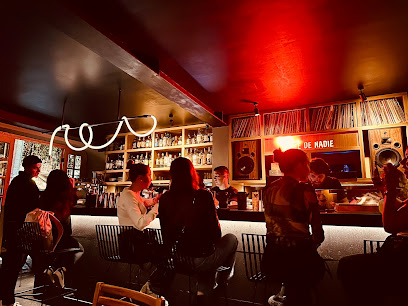
Loup Bar
Discover Loup Bar, a chic wine bar in Roma Norte, Mexico City, offering a curated selection of wines and delectable small plates in a stylish atmosphere.
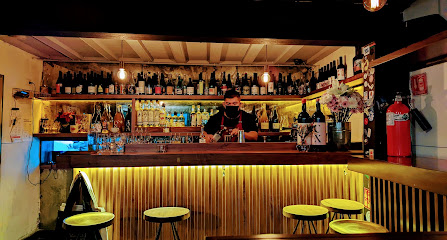
Le Gutie
Experience the vibrant nightlife at Le Gutie, a charming bar in Roma Norte, Mexico City, featuring an extensive drink menu and lively atmosphere.

Xolo Bar
Experience the vibrant nightlife and delicious flavors of Xolo Bar in Roma Norte, Mexico City, where every visit is a celebration.
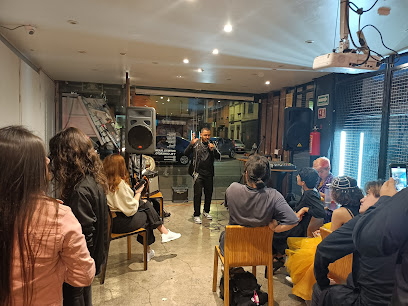
Musak
Discover the vibrant nightlife at Musak, a premier bar in Roma Norte, Mexico City, offering a lively atmosphere and exquisite cocktails for an unforgettable experience.
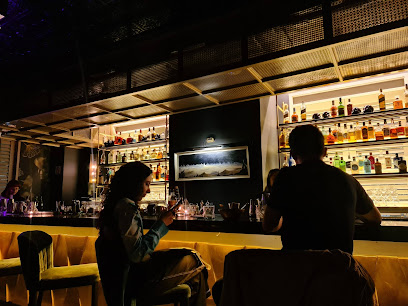
Local Phrases
-
- HelloHola
[oh-lah] - GoodbyeAdiós
[ah-dee-ohs] - YesSí
[see] - NoNo
[noh] - Please/You're welcomePor favor/De nada
[pohr fah-vohr/deh nah-dah] - Thank youGracias
[grah-see-ahs] - Excuse me/SorryPerdón/Lo siento
[pehr-dohn/loh see-ehn-toh] - How are you?¿Cómo estás?
[koh-moh ehs-tahs] - Fine. And you?Bien. ¿Y tú?
[bee-ehn. ee too] - Do you speak English?¿Hablas inglés?
[ah-blahs een-glehs] - I don't understandNo entiendo
[noh ehn-tee-ehn-doh]
- HelloHola
-
- I'd like to see the menu, pleaseMe gustaría ver el menú, por favor
[meh goos-tah-ree-ah behr ehl meh-noo, pohr fah-vohr] - I don't eat meatNo como carne
[noh koh-moh kahr-neh] - Cheers!¡Salud!
[sah-loohd] - I would like to pay, pleaseMe gustaría pagar, por favor
[meh goos-tah-ree-ah pah-gahr, pohr fah-vohr]
- I'd like to see the menu, pleaseMe gustaría ver el menú, por favor
-
- Help!¡Ayuda!
[ah-yoo-dah] - Go away!¡Vete!
[veh-teh] - Call the Police!¡Llama a la policía!
[yah-mah ah lah poh-lee-see-ah] - Call a doctor!¡Llama a un doctor!
[yah-mah ah oon dohk-tohr] - I'm lostEstoy perdido/a
[ehs-toy pehr-dee-doh/dah] - I'm illEstoy enfermo/a
[ehs-toy ehn-fehr-moh/dah]
- Help!¡Ayuda!
-
- I'd like to buy...Me gustaría comprar...
[meh goos-tah-ree-ah kohm-prahr] - I'm just lookingSólo estoy mirando
[soh-loh ehs-toy mee-rahn-doh] - How much is it?¿Cuánto cuesta?
[kwan-toh kwehs-tah] - That's too expensiveEso es demasiado caro
[eh-soh ehs deh-mah-see-ah-doh kah-roh] - Can you lower the price?¿Puedes bajar el precio?
[pweh-dehs bah-hahr ehl pree-syoh]
- I'd like to buy...Me gustaría comprar...
-
- What time is it?¿Qué hora es?
[keh oh-rah ehs] - It's one o'clockEs la una en punto
[ehs lah oo-nah ehn poon-toh] - Half past (10)Las diez y media
[lahs dyehs ee meh-dee-ah] - MorningMañana
[mah-nyah-nah] - AfternoonTarde
[tahr-deh] - EveningNoche
[noh-cheh] - YesterdayAyer
[ah-yehr] - TodayHoy
[oy] - TomorrowMañana
[mah-nyah-nah] - 1Uno
[oo-noh] - 2Dos
[dohs] - 3Tres
[trehs] - 4Cuatro
[kwah-troh] - 5Cinco
[seen-koh] - 6Seis
[sehs] - 7Siete
[syeh-teh] - 8Ocho
[oh-choh] - 9Nueve
[nweh-veh] - 10Diez
[dyehs]
- What time is it?¿Qué hora es?
-
- Where's a/the...?¿Dónde está el/la...?
[dohn-deh ehs-tah ehl/lah] - What's the address?¿Cuál es la dirección?
[kwal ehs lah dee-rehk-syohn] - Can you show me (on the map)?¿Puedes mostrarme (en el mapa)?
[pweh-dehs mohs-trahr-meh (ehn ehl mah-pah)] - When's the next (bus)?¿Cuándo es el próximo (autobús)?
[kwan-doh ehs ehl proh-ksee-moh (ow-toh-boos)] - A ticket (to ....)Un boleto (a ....)
[oon boh-leh-toh (ah)]
- Where's a/the...?¿Dónde está el/la...?
History of Roma
-
The Roma neighborhood, originally known as Colonia Roma, began its development in the late 19th century, during the Porfirio Díaz era. This period was marked by rapid urbanization and modernization in Mexico City, leading to the establishment of Roma as a fashionable residential area for the upper and middle classes. The architectural styles of the time, including Art Nouveau and Neoclassical, can still be admired in the neighborhood's grand mansions and buildings.
-
As the 20th century progressed, Roma became a cultural hub, attracting artists, intellectuals, and bohemians. This vibrant community was characterized by a lively café culture, galleries, and theaters. The neighborhood played a significant role in the Mexican cultural renaissance, contributing to the country's artistic movements, including the Mexican Muralism that emerged in the 1920s.
-
The Mexican Revolution (1910-1920) brought significant social and political changes, impacting neighborhoods like Roma. Many wealthy families fled or lost their properties during the upheaval, leading to a demographic shift. The area began to diversify, with an influx of lower-income residents and a burgeoning working-class culture that would define Roma for decades.
-
Following years of neglect and urban decline in the mid-20th century, Roma faced challenges such as crime and deteriorating infrastructure. However, in the late 1990s, a gentrification trend began, driven by young professionals and artists reclaiming the area. This resurgence revitalized the neighborhood, leading to the restoration of historic buildings and the emergence of trendy cafés, bars, and shops.
-
Today, Roma is celebrated for its eclectic mix of historic charm and contemporary culture. The neighborhood is home to a diverse community and hosts numerous cultural events, art exhibitions, and festivals. Its streets are lined with murals that pay homage to its rich history, making Roma a vibrant example of Mexico City's ongoing narrative of resilience and adaptation.
Roma Essentials
-
Roma is easily accessible from various parts of Mexico City. The nearest metro station is 'Hospital 20 de Noviembre' on Line 7 (Orange Line), which connects to other major lines. You can also take the Metrobus, which has several lines running through the area, including Line 1 (Pink Line) that stops at key locations in Roma. For those coming from the airport, taxis and ride-sharing services like Uber are available, providing a convenient and direct route to Roma.
-
Roma is a walkable neighbourhood, and many attractions are within a short distance of each other. The metro system is efficient for longer distances, while the Metrobus offers a reliable alternative. Bicycles can be rented through Mexico City's Ecobici system, with stations located throughout Roma. Additionally, taxis and ride-hailing apps are accessible and affordable for those who prefer not to walk.
-
Roma is generally considered safe for tourists, but it is advisable to remain vigilant, especially at night. Areas around the edges of Roma, particularly towards Tepito and the outskirts of the downtown area, have higher crime rates, including petty theft and scams targeting tourists. Always stay aware of your surroundings and avoid displaying valuable items.
-
In case of an emergency, dial 911 for police, fire, or medical assistance. Familiarize yourself with the location of the nearest hospital or clinic. The main hospital in the area is 'Hospital de Especialidades' on Avenida Cuauhtémoc. Always carry a copy of your identification and have an emergency contact number saved on your phone.
-
Fashion: Do wear comfortable clothing and shoes suitable for walking, and don't wear flashy jewelry. Religion: Do respect local customs when visiting churches; cover shoulders and knees. Public Transport: Do give your seat to the elderly and don't engage in loud conversations. Greetings: Do greet with a friendly 'Hola' and a handshake; don't use overly familiar gestures unless invited. Eating & Drinking: Do try local food at street vendors; don't eat in public transport or leave food on your plate.
-
To experience Roma like a local, visit the Mercado Roma, a trendy market with diverse culinary offerings. Engage with local artisans at the various boutiques and galleries in the area. Take time to explore Parque Mexico, a lush park popular with locals for jogging and leisurely strolls. Don't miss the chance to join a local art walk or participate in community events often held in the neighbourhood.
Trending Landmarks in Roma
-
Plaza de la Constitución
-
Monument to the Revolution
-
Templo Mayor Museum
-
Fuente de Cibeles
-
Monumento a la Madre
-
Ramón López Velarde Garden
-
Plaza Luis Cabrera
-
Plaza Río de Janeiro
-
MODO Museo del Objeto del Objeto
-
Monument to Cuauhtémoc
-
Casa “Roma” Alfonso Cuarón
-
Monumento al Honorable Pueblo de México
-
Mural en fachada
-
Fuente Sátiro y Amor
-
Arbol De Discos
Nearby Cities to Roma
-
Things To Do in Taxco
-
Things To Do in Puebla
-
Things To Do in Queretaro
-
Things To Do in San Miguel de Allende
-
Things To Do in Guanajuato
-
Things To Do in Acapulco
-
Things To Do in Veracruz
-
Things To Do in Oaxaca
-
Things To Do in Puerto Escondido
-
Things To Do in Guadalajara
-
Things To Do in Ixtapa-Zihuatanejo
-
Things To Do in Puerto Vallarta
-
Things To Do in Chiapas
-
Things To Do in Monterrey
-
Things To Do in Matamoros

